 Itasca 3DEC distinct-element modelling software
Itasca 3DEC distinct-element modelling software
3DEC is a three-dimensional numerical modelling code for advanced geotechnical analysis of soil, rock, ground water, structural support, and masonry. 3DEC simulates the response of discontinuous media (such as jointed rock or masonry bricks) that is subject to either static or dynamic loading. The numerical formulation It is based on the distinct element method (DEM) for discontinuum modelling. UDEC is the two-dimensional version.
The discontinuous material is represented as an assemblage of discrete blocks. The discontinuities are treated as boundary conditions between blocks; large displacements along discontinuities and rotations of blocks are allowed. Individual blocks behave (based on constitutive and joint models) as either rigid or deformable (i.e., meshed into finite difference zones) material. Continuous and discontinuous joint patterns can be generated on a statistical basis. A joint structure can be built into the model directly from the geologic mapping. 3DEC also contains Itasca's powerful built-in scripting language FISH. With FISH, you can write your own scripts for users who wish to add functionality for custom analyses.
Perpetual, monthly lease, and annual lease licences are available as either a local USB-key (which is portable), a multiple-seat network USB-key or digital web licence. Academic institutions qualify for special pricing discounts.
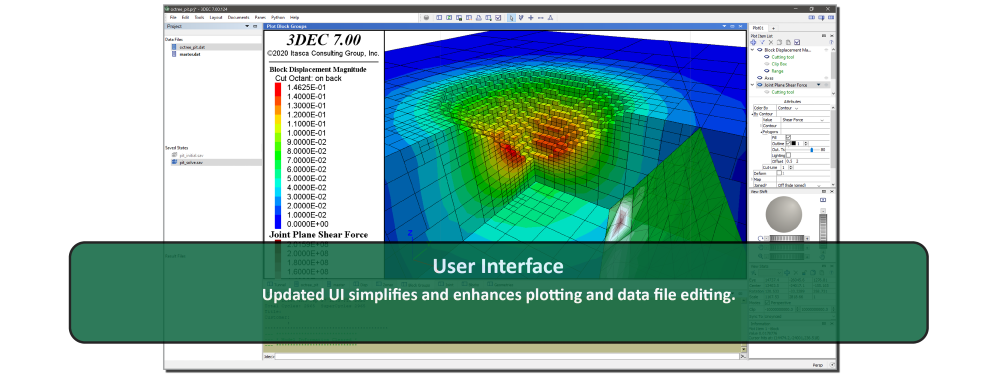
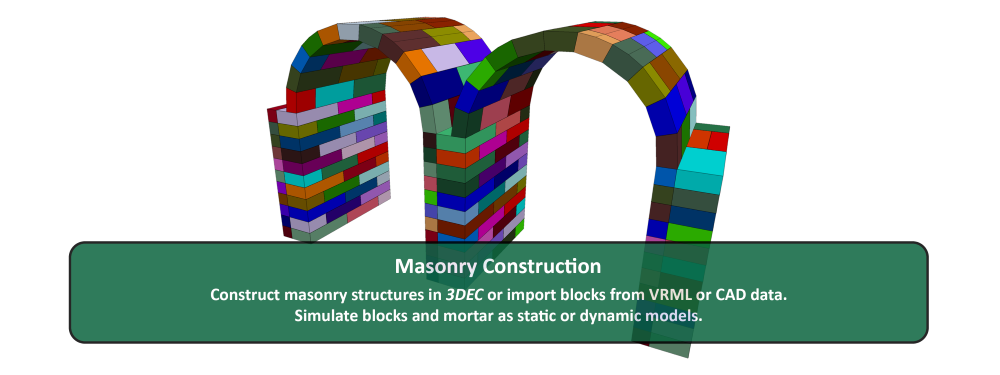
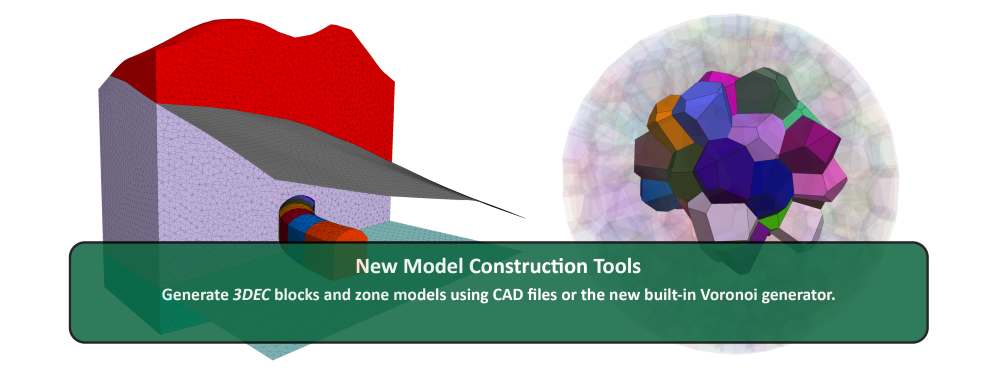
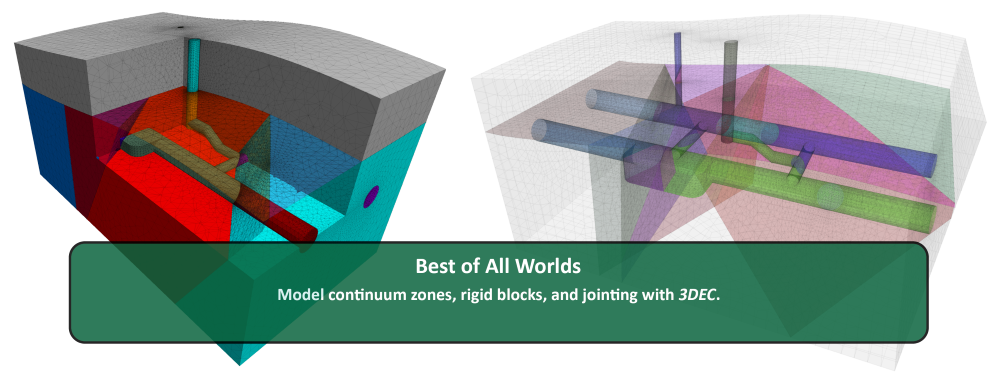
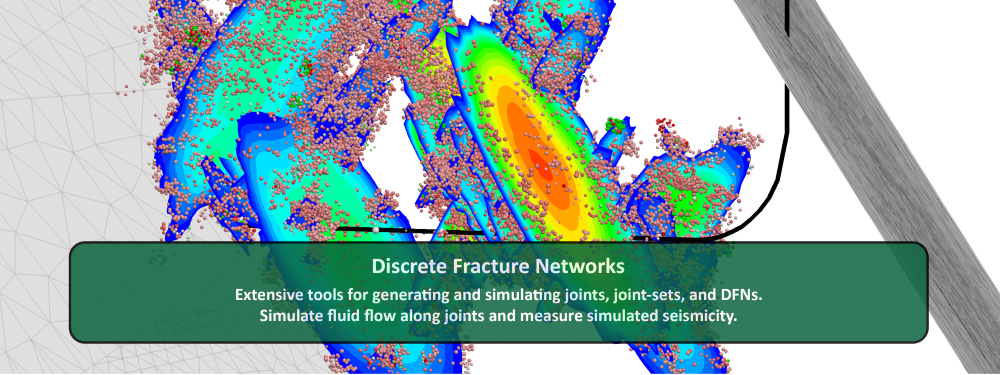
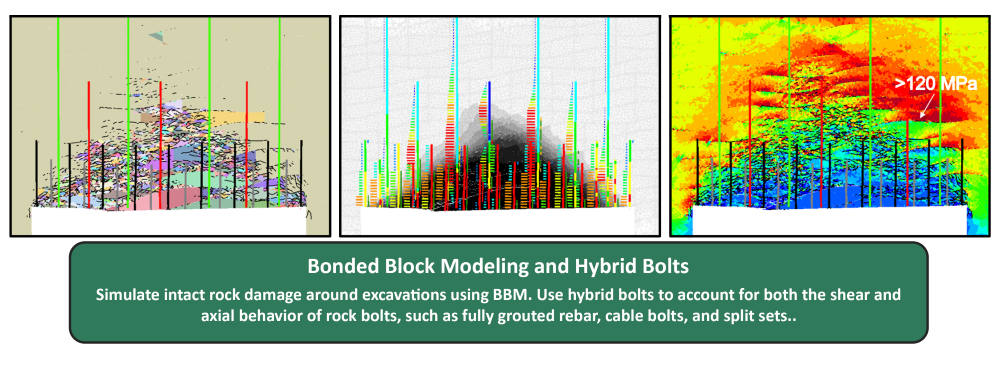
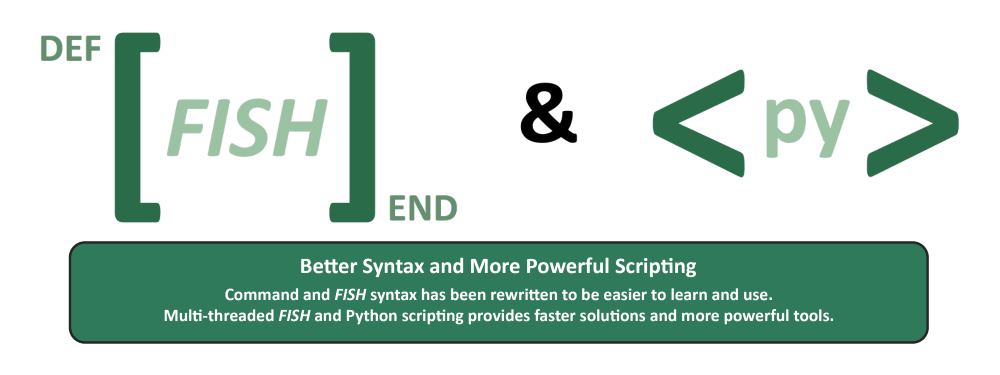
Options
Options in 3DEC are sold separately from the general licence, allowing users to select the program’s capabilities as meets their own analysis needs without having to purchase all features. Beginning with 3DEC Version 7, the Finite Element Structural Liners option is now included at no additional charge.
Dynamic Analysis: 3DEC simulates the nonlinear response of a system (soil, rock, and structures) to excitation from an external (e.g., seismic) source or internal (e.g. vibration or blasting) sources.
Thermal Analysis: The thermal option in 3DEC allows the simulation of transient heat conduction.
User-Defined Constitutive Models: User-defined constitutive models (UDMs) can be written in C++ for both deformable block materials (zones) and any discontinuities (joints, faults, bedding, artificial surfaces) to calculate new stresses, displacements and strains, for a modified existing material model or a fully customised material behaviour.
IMASS: option to represent the rock mass response to excavation induced stress change.


